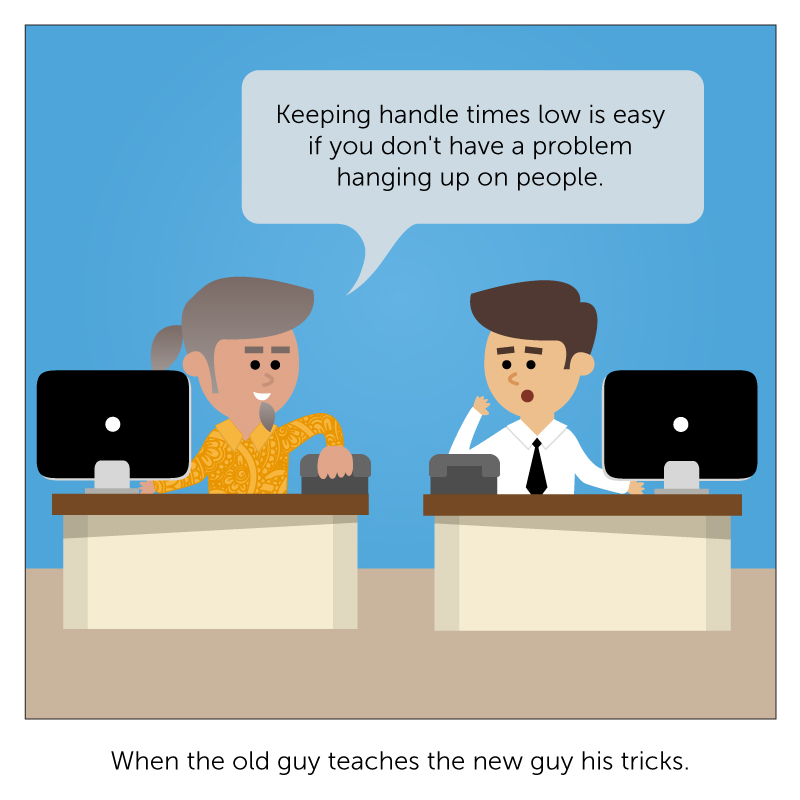Who Needs Customer Engagement Analytics is the fourth in a series on Customer Engagement Analytics.
In the third blog in this series, we explored when Customer Engagement Analytics is needed in the contact center. Now we’ll look at who needs Customer Engagement Analytics.
Sales Contact Centers
Etail, Retail, and Direct Marketers – anyone who sells a product or service involving a contact center – is one group who needs Customer Engagement Analytics. Customer Engagement Analytics identifies trends in buyer behaviors and attributes. It helps you predict not only which customers are likely to buy your product, but also which agents to connect them to (because they have the best close rate for that type of customer).
Sales Contact Centers need Customer Engagement Analytics to make the most of their agents. This group is one who needs Customer Engagement Analytics because it helps you identify which agents close the most business with your most valuable customers (i.e., agent business performance). You can also use Customer Engagement Analytics to identify the scripts and offers that work best with buyers who have certain attributes and behaviors.
Based on the consumer and agent behaviors identified by Customer Engagement Analytics, you can optimize scheduling and workforce management for sales. One call center did this and discovered that customers with the highest likelihood of buying called between 5:00 pm and 7:00 pm, and stayed on the phone for a minimum of 45 minutes. Armed with that information, they stopped goaling agents on call volume. Also, since some of their best closers were not working during those hours, they changed the schedule to align the best closers with the times buyers were most likely to call. This is a strong example of who needs Customer Engagement Analytics.
Customer Service Contact Centers
Product and services companies (retail, etail, technology, hospitality, finance, telecommunications, and government) are also a group who needs Customer Engagement Analytics, because it helps them identify customer service issues, and helps solve them, while also providing a better customer experience.
Product and services companies need Customer Engagement Analytics to understand which customers may have service issues at some point and why. Customer Engagement Analytics can be used to identify trends between issues, products and services, customer attributes, and behaviors. In addition, Customer Engagement Analytics can give agents insight in identifying customer service issues.
Let’s use a shipping issue as an example. Say certain customers (whom Customer Engagement Analytics identified by the attributes of age, first language, and region) find a web order form confusing, so they tend to provide incorrect zip code and state/province customer information. Knowing this, when a service call is received from a customer with these attributes, agents will know incorrect zip code or state/province information is a likely issue, making it easier for them to identify and solve the problem for the customer. You can also look at ways to prevent this issue for future customers by walking through the buying process.
Customer Retention Teams within Contact Centers
Companies or services with a subscription model (consumer products, consumer finance, telecommunications, software subscriptions, etc.) are an excellent example of who needs Customer Engagement Analytics. Direct Marketing companies with a monthly product subscription have also had a lot of success with Customer Engagement Analytics.
Customer Engagement Analytics informs customer retention teams the attributes of customers who are at risk, helping predict them in advance. You can use Customer Engagement Analytics to identify which agents are best at retaining customers, and also which offers and scripts have the best retention results (based on customer attributes and behaviors). Given this information, you can then optimize routing to match customers with the offers and agents with the greatest probability of success, and see your retention rates go up.
For example, one direct marking company was selling a monthly subscription via infomercials. Customers would buy, not always realizing it was a subscription until the second monthly shipment arrived, at which point they would call to cancel. Customer Engagement Analytics helped predict what percentage of customers would call, and based on sales volume, ensured they were staffed with the right agents to handle the call volume of customers wanting to terminate their subscription. This increased their retention rate, now that’s a call center who needs customer engagement analytics.
Customer Support Call Centers
Technology, consumer products, communications, media, and entertainment companies are in the category of who needs Customer Engagement Analytics, because it helps them identify information vital to their success. For example, you can use Customer Engagement Analytics to predict which customers will have problems with which products at a certain point in their journey. This enables you to proactively work with these customers and educate them before an issue actually arises. You can use Customer Engagement Analytics to identify product issues which need to be proactively resolved and communicated to a larger customer base, and which recurring issues require additional knowledgebases and training for agents.
Customer Support call centers need Customer Engagement Analytics to help improve agent performance. Customer Engagement Analytics can help determine which agents are best at resolving certain kinds of issues, and which practices and procedures maximize issue resolution. You can match callers with agents and processes to best solve the problem. Customer Engagement Analytics can also help you identify opportunities for FAQs and customer self-service options to reduce the load on the call center.
One tech company who used Customer Engagement Analytics to identify which of their customers (based on the products they bought and their web activity) were not tech savvy. They also used Customer Engagement Analytics to identify which of their agents were best at educating the novice customers when they called with technical support issues on product setup. This allowed them to route the novice customers to the agents who were the best fit to help them with their set up issues and make them happy users of the product. The company started getting great customer reviews for their tech support.
Who Needs Customer Engagement Analytics? – All Call Centers
Customer contact centers need Customer Engagement Analytics to help them understand their customers and what they can do to help support and retain them. Stay tuned for the next part of our Customer Engagement Analytics Series – How? To learn more about the CC-One tools for Customer Engagement Analytics, visit CC-One Contact Center Analytics.








